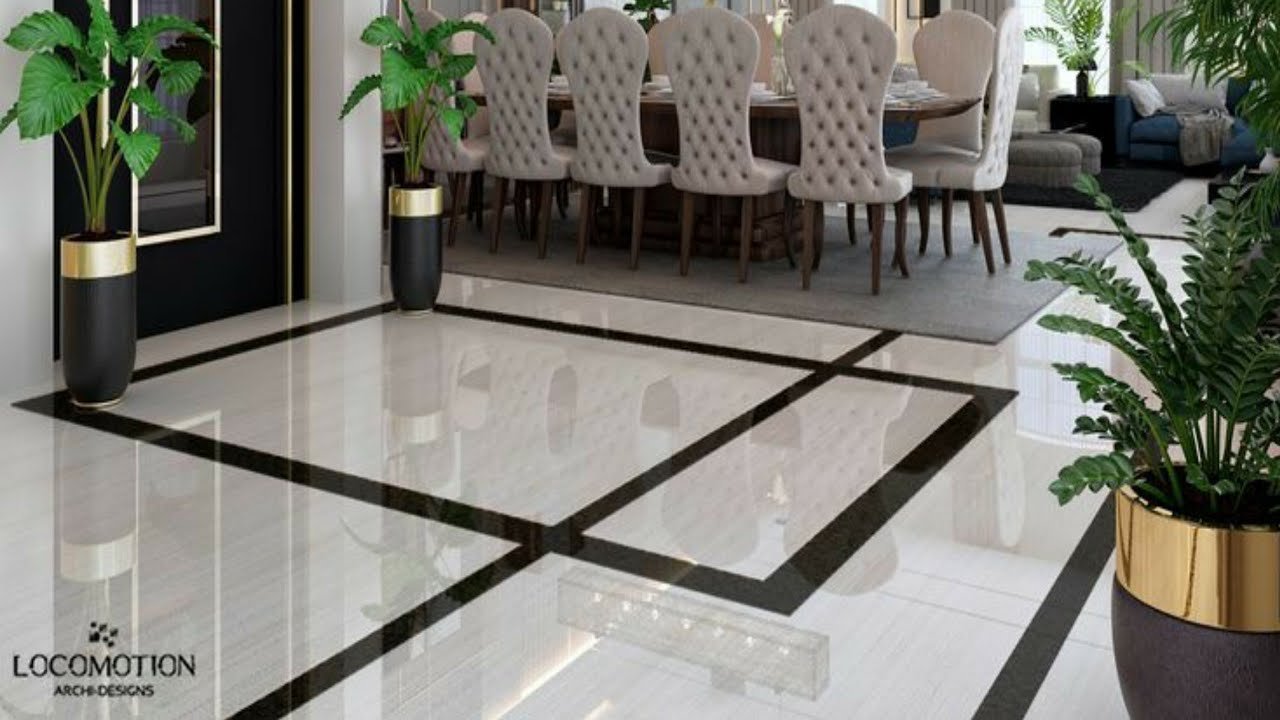The drawing room, often considered the heart of a home, is where families gather, entertain guests, and spend quality time. As such, its design plays a crucial role in setting the tone for the entire house. Among the many elements that contribute to the ambiance of a drawing room, the choice of flooring is particularly significant. Drawing room tiles, with their vast range of styles, materials, and patterns, offer a versatile and durable option to enhance the beauty and functionality of this essential space.
The Importance of Tile Selection in the Drawing Room
When it comes to the drawing room, the flooring must strike a balance between aesthetics and practicality. The right tiles can transform the look of the room, complement the décor, and withstand the wear and tear of daily life. Tiles are an excellent choice for drawing rooms because they offer a wide array of designs, are easy to maintain, and are highly durable.
Popular Types of Drawing Room Tiles
Ceramic Tiles: Ceramic tiles are a popular choice for drawing rooms due to their durability, affordability, and versatility. Available in a variety of colors, patterns, and finishes, ceramic tiles can mimic the look of natural stone, wood, or even fabric. They are also easy to clean, making them ideal for high-traffic areas.
Porcelain Tiles: Known for their strength and water resistance, porcelain tiles are an excellent option for drawing rooms. These tiles are denser and less porous than ceramic tiles, making them more resistant to stains and scratches. Porcelain tiles are available in a wide range of finishes, including polished, matte, and textured, allowing homeowners to create a luxurious or understated look.
Marble Tiles: Marble tiles are synonymous with luxury and elegance. Their natural veining and glossy finish make them a popular choice for creating a sophisticated and timeless drawing room. While marble requires regular maintenance to prevent staining and etching, the investment is often worth it for the stunning visual impact it delivers.
Travertine Tiles: Travertine tiles offer a more rustic and earthy aesthetic, with their natural stone texture and warm color tones. They are ideal for drawing rooms that embrace a more traditional or Mediterranean style. However, like marble, travertine requires sealing and maintenance to preserve its beauty over time.
Wood-Look Tiles: For those who love the look of hardwood but prefer the durability of tiles, wood-look tiles are an excellent compromise. Made from ceramic or porcelain, these tiles mimic the appearance of wood grain while offering the benefits of tile flooring, such as resistance to moisture and scratches.
Glass Tiles: Glass tiles are less common in drawing rooms but can be used creatively to add a touch of modern flair. These tiles reflect light, creating a bright and airy feel in the room. They are often used as accent tiles or in combination with other materials to create a unique and contemporary design.
Design Ideas for Drawing Room Tiles
Classic Elegance with Marble: Marble tiles in neutral shades like white, cream, or gray can create a classic and elegant drawing room. Pair them with plush furnishings and metallic accents to complete the luxurious look.
Modern Minimalism with Large Format Tiles: Large-format tiles in shades of gray, beige, or white are perfect for achieving a modern, minimalist aesthetic. These tiles create a seamless, expansive look that makes the drawing room feel more open and uncluttered.
Rustic Charm with Travertine or Slate: For a cozy and inviting drawing room, consider using travertine or slate tiles. Their natural textures and earthy tones add warmth and character to the space. Complement them with wooden furniture and soft textiles for a rustic, homely atmosphere.
Patterned Tiles for a Statement Floor: If you want to make a bold statement, patterned tiles are the way to go. Moroccan or encaustic-style tiles can add a vibrant and artistic touch to the drawing room. Use them as a focal point by tiling the entire floor or creating an accent area, such as beneath the coffee table.
Monochrome Magic with Black and White Tiles: Black and white tiles create a timeless and striking visual effect. Whether you opt for a classic checkerboard pattern or a more intricate design, these tiles can add a sense of drama and sophistication to the drawing room.
Wood-Look Tiles for a Warm and Inviting Space: Wood-look tiles in rich, warm tones can create a cozy and welcoming drawing room. These tiles are particularly effective in spaces that blend indoor and outdoor living, as they offer the aesthetic of wood with the durability of tile.
Practical Considerations When Choosing Drawing Room Tiles
Durability: Since the drawing room is a high-traffic area, it’s essential to choose tiles that can withstand regular use. Porcelain and ceramic tiles are highly durable and resistant to wear, making them ideal for busy households.
Maintenance: Consider how much maintenance you’re willing to commit to. While marble and travertine tiles require regular sealing and care, ceramic and porcelain tiles are low-maintenance options that are easy to clean.
Comfort: Tile floors can feel cool underfoot, which may not be desirable in colder climates. However, this can be mitigated by using area rugs or underfloor heating systems to add warmth and comfort.
Slip Resistance: In a drawing room where children or elderly family members may be present, slip resistance is an important factor. Opt for tiles with a textured or matte finish to reduce the risk of slipping.
Conclusion
Drawing room tiles are a versatile and stylish option for flooring that can dramatically enhance the look and feel of your home. Whether you prefer the timeless elegance of marble, the rustic charm of natural stone, or the modern appeal of large-format porcelain, there’s a tile to suit every style and need. By carefully selecting the right tiles for your drawing room, you can create a space that is not only beautiful but also functional, durable, and welcoming for years to come.
